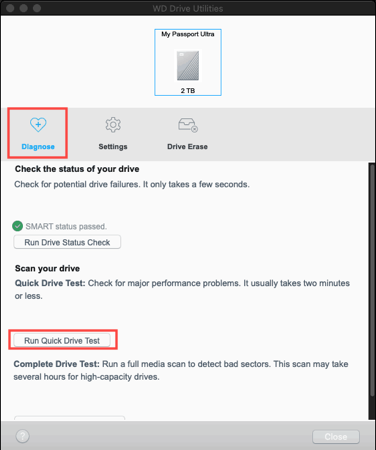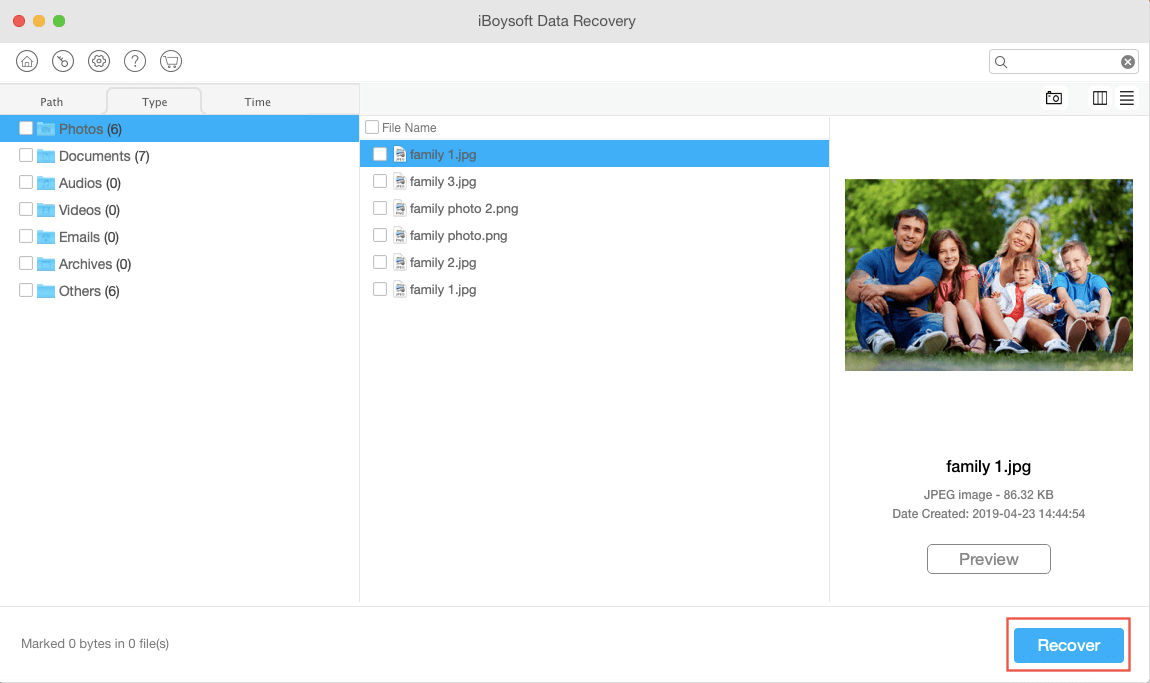Summary:This article will show you 8 solutions to troubleshoot the external hard drive not mounting in macOS Big Sur/Catalina/Mojave error and how to recover lost data from unmountable external hard drives with iBoysoft Mac Data Recovery.
I was having the same issue with my external lacie G drive not mounting but was visible in Disk utility. I tried all sorts of things and the one that worked for me was to zap the P Ram. I am on MacBook Pro, so restart the Mac hold shift+control+option+power button 10 secs. Once I had done this I logged back in and boom the drive mounted. The recent Western Digital 'easy store' and 'My Book' hard drives have a Mac Sierra 10.12.6 issue: They are invisible to the Desktop. WD Utilities says my two drives check out ok; Mac Utilities recognizes both hard drives. Going to the Mac Genius Bar on Monday. BestBuy sold me the original WD easystore 8T and WD sent me a My Book 8T.
If your WD My Passport for Mac drive for Mac is not mounting but grayed out in Disk Utility, you can right-click and select the 'Mount' button to force mount the hard drive. However, if this external hard drive is corrupted, the 'Mount' button will not be available and you need to try the next solution. Here are some common reasons on external hard drive not mounting on Mac; Faulty connection with external storage drive; The first and foremost reason for your external hard drive not mounting on mac could be the dirty or loose connection between the cables, USB-C multi-adapter, thunderbolt 3, or any other connection ports.
Normally, when you plug in an external hard drive to Macs, you'll see it mounted on the desktop, in Finder and in Disk Utility. Then you can read, edit, copy and delete files on the mounted external hard drive. However, if you areunable to mount external hard drives or it reminds you with the 'com.apple.DiskManagement.disenter error' message, you cannot access your important data on this drive at all. The worst thing is that you don't even have any data backup when your external hard drive is unmountable. But now you can ease your mind, in this page, you will see 8 feasible solutions that you can try to make the external hard drive mounted in macOS Catalina/Mojave/High Sierra/Sierra.
- Table of contents
- 1. How to recover lost data if Mac won't boot after Mojave update?
- 2. Read more about Mounting a disk
How to fix external hard drive not mounting in macOS Catalina/Mojave issue?
Solution 1: Check if the hard drive is properly plugged in.
Since the connection between your Mac and external hard drives relies on cables, loose connections could be the cause that your external hard drive is not recognized by your Mac computer.
If the unstable connection is the case, your external hard drive would not be mounted even with a slight disturbance. Sometimes the cable itself will become hot because of a faulty connection. Therefore, you need to make sure that the connection, i.e. the USB cable, is in good condition.
Wd Mybook Not Mounting Mac
Solution 2: Check if the USB port/USB hub is unmatchable, damaged or lack of power.
If your external hard drive or USB flash drive is not mounted on Mac, try plugging it into another USB port or a USB hub. That's because there're USB 3.0 and USB 2.0 ports and they have some differences: USB 3.0 has higher transfer rates, provides more power, more bandwidth, etc. than USB 2.0. As you can see, insufficient power supply or damaged USB ports could also lead to external hard drives not mounting in macOS Catalina/Mojave/High Sierra.

To check this error, you can unplug the problematic external hard drive and plug a functional external hard drive into this USB port to see if it can be mounted normally.
Solution 3: Check if your Mac is set to show mounted drives on the desktop.
It's also possible that your Mac has alreadyrecognized the external hard drive butnot showing up on Mac desktop or Finder. Under such circumstance, you should go to Finder > Preferences > General and make sure the 'External disks' option is ticked. Then you'll see the external hard drive mounted on the desktop.
You can also set your Mac to show external hard drives in Finder. Go to Finder > Preferences > Sidebar and make sure the 'External disks' option under 'Locations' is ticked.
Solution 4: Check if the external hard drive is NTFS formatted.
NTFS (New Technology File System) is a proprietary file system developed by Microsoft. However, for some reasons, macOS comes with read-only support for NTFS; its disabled-by-default write support for NTFS is unstable. Even though the NTFS formatted external hard drive can show up in Disk Utility, external hard drives might not be mounting as normal.
You can go to Disk Utility and check the file system of the external hard drive is NTFS or not, if this is the case, you can back up the files on the NTFS external hard drive and format it to Mac supported file systems (APFS, HFS+ or HFS) or file systems supported by both Windows and Mac, like FAT32 and exFAT.
Nevertheless, the best phenomenon is that you can read and write NTFS both on Macs and on Windows without fuss. So, a good NTFS for Mac application will enable you to write NTFS external hard drives on macOS without reformatting.
Solution 5: Check if the external hard drive is mountable in Disk Utility.

You can check if your external hard drive is mounting in Disk Utility. If your external hard drive appears there but is not mounted, you can click the Mount icon then the external hard drive will be mounted in macOS Catalina/Mojave.
However, if the external hard drive appears in Disk Utility but is unmountable or no volumes of that external drive listed, you got both good news and bad news. Good news is that showing the external hard drive in Disk Utility means the drive has no hardware problem, while the bad news is that the file system of this drive probably is corrupted.
But don't worry, macOS has a built-in repair tool, called First Aid, to fix minor disk errors. You can try to fix the external hard drive not mounting issue with this useful program. Just go to Utilities > Disk Utility and click First Aid.
Solution 6: Fix the unmountable external hard drive with Terminal.
If your external hard drive can't be recognized by your Mac and First Aid failed to repair it, you can try to remount via Terminal by following the steps carefully as below:
1. Go to Applications > Utility > Terminal.
2. Type in diskutil list. Look for the section labeled /dev/disk_ (external, physical), remember the disk number.

3. Type indiskutil info disk_. Replace '_' with your external disk number. This is to check if your system recognizes this drive.
4. Once confirmed, type in diskutil eject disk_ to eject the external drive.
5. Physically remove the external drive and then re-plug it. Hopefully, your external hard drive will be mounted in macOS Catalina/Mojave.
Solution 7: Check if the external hard drive is corrupted.
If unfortunately, none of the above solutions worked, it's very likely that the files system of the external hard drive is corrupted or damaged too seriously to be recognized by macOS Catalina/Mojave. It could be the result of file system broken, virus attacks, improper ejection, etc. And if you have no important files on this drive, you can directly assign a new file system for this external hard drive by reformatting.
• How to format external hard drives on Mac?
Solution 8: Recover lost data and reformat the unmountable external hard drive.
But what if you have invaluable data that you don't want to lose on this inaccessible external hard drive? In this case, recovering data from this drive with professional data recovery software, such asiBoysoft Mac Data Recovery, would be your access to this unmountable external hard drive.
iBoysoft Data Recovery for Mac is able to recover lost data fromnot mounted external hard drives in macOS Catalina/Mojave/High Sierra,recover lost data from corrupted external APFS drives,recover lost data from unreadable external hard drives,recover deleted/lost data from APFS drives, and recover lost data from formatted APFS files, etc.
Wd Hard Drive Not Mounting Mac
Step 1: Download and install iBoysoft Data Recovery for Mac on Mac.
Step 2: Launch this program. Select the unmountable hard drive and click 'Next'. The program will start scanning this drive for lost files.
Wd Passport Not Mounting Mac
Step 3: After the scanning process finishes, you can double click the found files and preview them.
Step 4: Choose what you want to get back and click 'Recover'.
Wd My Passport Not Mounting Mac
Step 5: Go through the recovered files and make sure your desired files are recovered from this external hard drive successfully.
If, unfortunately, your data lost from external hard drive in macOS Catalina/Mojave, whether the disk was formatted accidentally or files were deleted mistakenly, you can recover lost data from unmountable hard drive with iBoysoft Data Recovery for Mac. But compared with data recovery software, the best way to escape from data loss is to back up your files on a regular basis.
Read more about Mounting a disk

Mounting a hard disk makes it accessible by the computer. This is a software process that 'activates' the disk, which makes the folders and files on the disk readable by the computer. If a hard drive is physically connected, but not mounted, the computer will not recognize it.
Can't Mount Wd Drive On Mac
Even though most operating systems, such as macOS, will mount newly connected disks by default, you still can't avoid accidental problems in that the hard drive is connected through devices like cable, USB port, etc. To fix external hard drive not mounting issue, you need to exclude the errors one by one, and to avoid external hard drive not mounting on macOS Catalina/Mojave, remember to safely unmount the external disk before ejection to avoid possible file data corruption.
Wd Hard Drive For Mac
Still have questions?